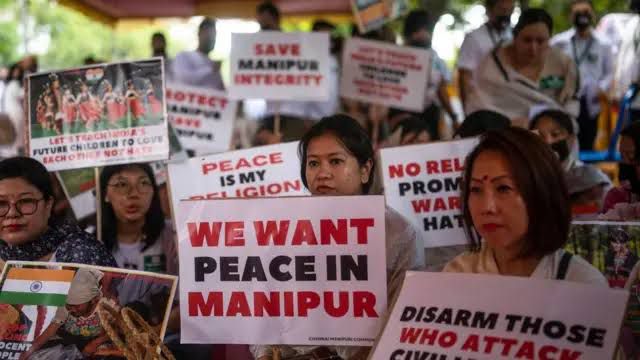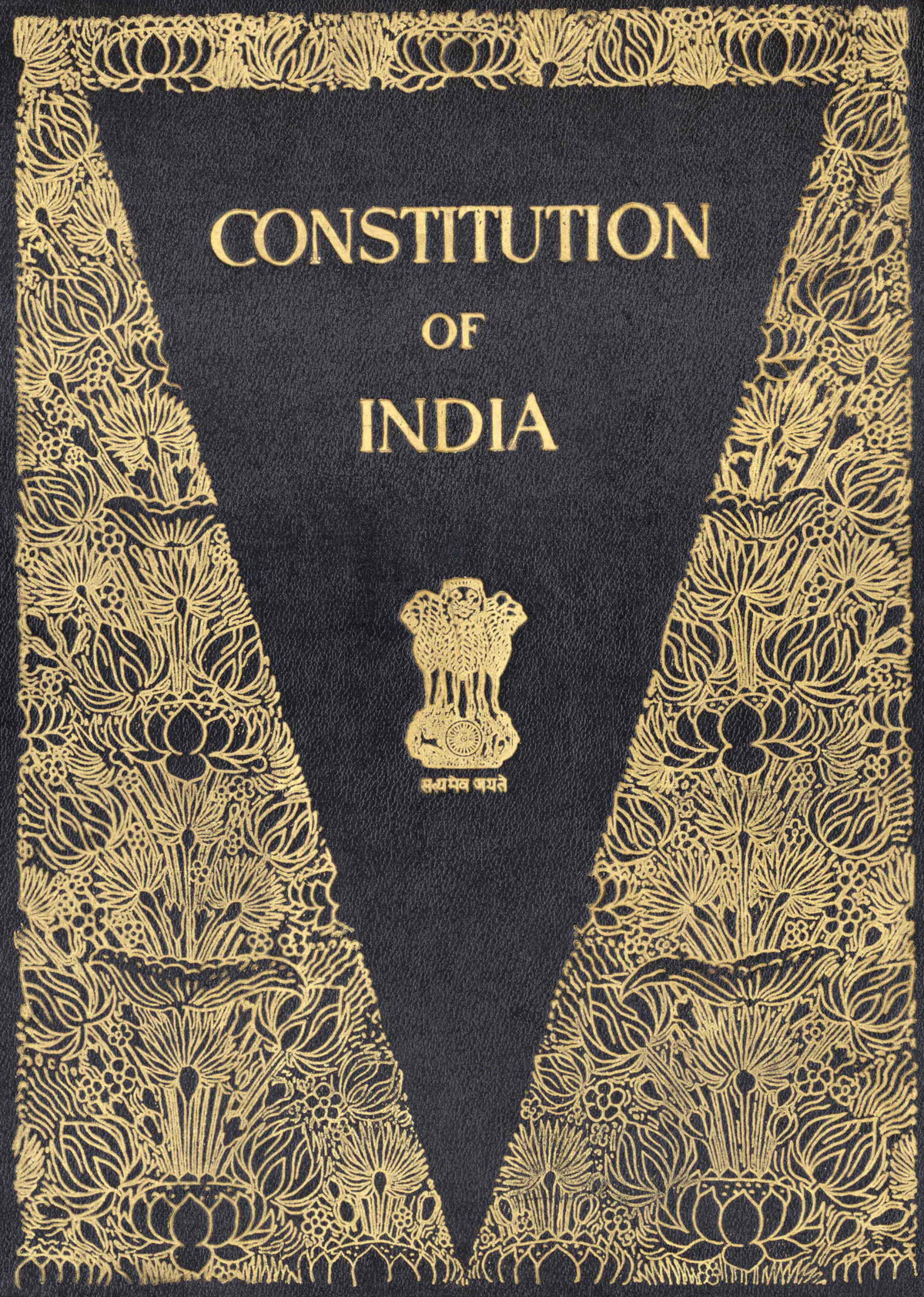Author : Harsh Tewari, a student at Bennett University
To the point
The horrific ways that women’s bodies are used as instruments of humiliation during times of conflict were made evident by the ethnic violence that broke out in Manipur in May 2023. This is not an isolated or sporadic act; rather, it is a component of a more extensive, systematic pattern of gendered violence that arises from the intersection of community identity, patriarchy, and power. One of the conflict’s most horrifying scenes was the vicious procession of two Kuki women, stripped naked and pulled through the streets by crowds. It represented the grim reality that the female body frequently turns into a battlefield where dominance, retaliation, and humiliation are practiced in conflicts between communities or ethnic groups. The patriarchal idea that a woman’s body is a symbol of her community’s honor rather than her own is the foundation of such behaviors. Assaulting a woman is viewed as a way to degrade her entire group in addition to violating her personal dignity. This type of violence is a calculated tactic used to undermine the morale of the other community. Historical examples of the use of women’s bodies to degrade enemies include mass rapes during India’s 1947 Partition, brutal rapes in Rwanda and Bosnia, and the medieval Indian Johar rituals, in which Rajput women would burn themselves alive in order to prevent capture by invading armies.
In each of these instances, women were singled out not only due to their vulnerability but also because attacking them sent a message to the community as a whole.
The Manipur case shows that this mindset continues in today’s India.. The nation was shocked by the violence against the two Kuki women, but it wasn’t an isolated incident. Our society’s pervasive objectification of women makes such violent acts possible. A culture of disrespect has long been accepted, from the media we consume, which frequently portrays women as nothing more than ornamental objects or objects of desire, to the colloquial language and jokes that disparage women. Women are frequently portrayed as passive, silent, or available in movies, music videos, ads, and even television shows, making them into objects to be used, observed, or evaluated.
Such cultural norms become dangerous when they are coupled with male-dominated power structures and communal hatred. Unknowingly or intentionally, society has created the conditions for violence like the one that occurred in Manipur. When women have already lost their agency in daily life, it is simpler to deprive them of their clothing and dignity. In addition to using physical force, the attackers in Manipur were conveying a message. The message was that we had defeated “you” by degrading “your” women. This article aims to investigate that message and question the circumstances that permit its transmission. The system that views women as extensions of a group’s pride and objectifies them in both public and private spheres is the root cause of gendered violence, which is not an accident. We must begin by altering how we view, treat, and discuss women in all spheres of society if we are to put an end to this violence.
Use of Legal Jargon
Scheduled Tribe (ST) status: A constitutional provision that provides affirmative action to marginalized communities under Articles 342 and 366 of the Constitution of India.
·• Patriarchy: A system of society where men control roles of moral authority, political leadership, and the ownership of property.
· Sexual violence: As defined under Section 375 and 376 of the Indian Penal Code (IPC).
· Ethnic cleansing: The intentional extermination or forced relocation of religious or ethnic groups from a particular area.
· Rule of law: The idea that all people, organizations, and things have to live by the law.
· Fundamental Rights: These are rights safeguarded by Part III of the Indian Constitution.
Proof
The Meiteis, who are mostly concentrated in the Imphal Valley, and the Kuki-Zo tribes, who live in the nearby hills, are the two main ethnic groups that call Manipur, a state in northeastern India that borders Myanmar, home. After a tribal solidarity march was planned in May 2023 to protest the Meitei community’s demand for Scheduled Tribe (ST) status, tensions between these communities worsened. The tribal groups were concerned that the Meiteis, who already hold a dominant position in politics and the economy, would gain more authority over jobs, land, and other resources in the area if they were granted ST status. What started out as a demonstration quickly descended into widespread ethnic violence. More than 60,000 people were displaced and forced to flee for their lives as a result of attacks on villages, burning homes, and desecration of places of worship.
When a video of two Kuki women being stripped and paraded by mobs went viral, the country was even more appalled. This horrifying event was not a singular act of fury; rather, it was part of a calculated plan to degrade a whole community by specifically targeting its women. From the widespread rapes that occurred during India’s 1947 Partition to the 1994 Rwandan genocide, the Bosnian war in the 1990s, and even the medieval Johar customs, history demonstrates a long and ruthless history of such violence. These violent crimes are not unintentional or unplanned; rather, they are the result of a patriarchal way of thinking that sees women as the bearers of social honor. Such brutality finds horrifying expression during conflicts, especially when combined with the objectification of women in the media and in daily life.
Abstract
A terrible reality was made clear by the Manipur conflict in 2023: intentional targeting of women’s bodies in acts of communal violence. A larger pattern of gendered violence, which has historically been used to degrade communities, is concealed behind the heinous act of parading two Kuki women nude. The regular objectification of women in movies, ads, and public perceptions is closely linked to this violence, which doesn’t just appear during conflicts. Communal hatred and patriarchy combine to form a lethal weapon that disproportionately harms women. True justice and peace will not be achievable until society confronts its ingrained perception of women as objects or symbols of honor.
Case Laws
1) Vishakha v. State of Rajasthan (1997) AIR 1997 SC 3011: Established guidelines for the prevention of sexual harassment at the workplace, recognizing sexual violence as a violation of Fundamental Rights under Articles 14, 19, and 21 of the Constitution.
Two Kuki women’s dignity, personal freedom, and right to life were clearly infringed in Manipur by the heinous act of parading them nude. By laying the burden of defending women’s rights on the State, the Vishakha ruling defines a constitutional basis for calling for justice in these kinds of cases of gendered violence.
2) Nirbhaya Case (Mukesh & Anr v. State for NCT of Delhi) (2017) 6 SCC 1: Reinforced the seriousness of sexual violence and established that justice must be swift and deterrent.
The terrible violence witnessed in the Nirbhaya case is reminiscent of the heinousness of
what transpired to the Kuki women in Manipur. The decision made it often obvious that crimes involving sexual violence must be strongly condemned by society in addition to receiving harsh penalties. By drawing a comparison to Manipur, this case serves to highlight the need for strong legal action in addition to condemnation.
3) Nilabati Behera v. State of Orissa (1993) 2 SCC 746: Established the principle of state accountability in cases of custodial violence, relevant for demanding accountability from authorities during the Manipur violence.
The administration’s and the police failure to stop the violence in Manipur, or potential complicity, raises grave concerns. This case gives the State a legal foundation for being held responsible for its negligence and obliged to reimburse the victims.
“When taken as a whole, these three important cases support the claim that gendered violence in Manipur was a constitutional failure that required demanding justice, rather than merely a crime driven by passion or communal hatred.”
Conclusion
In conclusion, the violence in Manipur shows how women’s bodies are still employed as weapons in disputes between different communities. The way women are treated there is not just a local issue; rather, it is a reflection of how society has perceived women for centuries, in times of peace and conflict. In addition to punishing those who committed these crimes, we also need to change the way we view women in general. Women must be emphasized as human beings with equal rights and dignity, not as objects or symbols of honor, by families, the media, and educational institutions. Until we completely eradicate this false mindset and bring about true peace and justice in society, such horrible deeds will not stop.
FAQs
Q1: Why were women singled out during the conflict in Manipur?
Because patriarchy associates women’s bodies with honor in the community, women were singled out. Attacking women during a conflict degrades the group as a whole. The violence against Kuki women was not an isolated incident; rather, it was a purposeful dominance strategy based on historical customs that have made women unwitting symbols of shame, power struggles, and ethnic retaliation.
Q2: How does such extreme violence relate to the everyday objectification of women?
Women are objectified on a daily basis in songs, ads, and the media, making them ornamental items. People are conditioned to see women as symbols or property by this cultural mindset. This way of thinking intensifies during conflict, justifying violence against women in order to undermine opponents’ “honor.” So, in wars, ordinary sexism becomes the basis for extraordinary, heinous violence.
Q3: What actions can be taken to stop future instances of this kind of gendered violence?
Punishment by itself is insufficient to stop such violence. Gender-sensitive education is necessary to shift society’s perspective and challenge patriarchal conventions in the media, in families, and in schools. It is essential to take strong legal action, ensure that women are fairly represented in leadership roles, and end victim-blaming. Long-term peace must be based on respecting women’s autonomy and human dignity.



